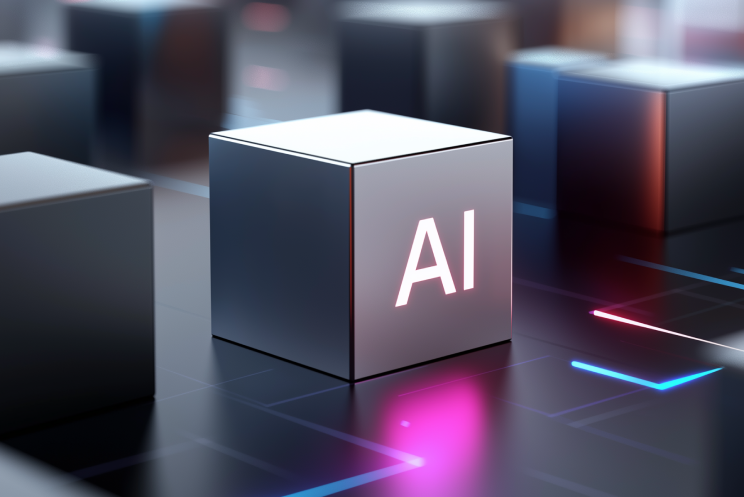The landscape of AI and machine learning is rapidly evolving, presenting both significant opportunities and complex challenges for organisations.
With 68% of large organisations having already integrated AI into their operations, we continue to see the growing recognition of AI's potential to drive efficiency, innovation, and growth within complex environments.
However, the journey from initial proof of concepts (PoCs) to realising tangible commercial value can present its challenges, and often requires an engineering-focused approach.
Common reasons for failure
Taking a promising AI PoC to a fully scaled and operational solution within an organisation can often face a number of challenges, leading to a significant number of PoCs failing to make it into production:
Lack of AI-ready data
One of the primary reasons for this failure is the lack of AI-ready data. Many enterprises struggle with data quality issues, including inaccuracies, inconsistencies, and incompleteness, as well as limitations in their data infrastructure, such as data silos and lack of integration, making it difficult to provide the necessary clean and accessible data for AI models to perform effectively in a production environment.
Unclear business case
Another critical factor is the absence of well-defined use cases and a clear understanding of the underlying business case. If the PoC is not tied to a specific business problem or lacks clear objectives and measurable outcomes, it can become challenging to justify the investment and effort required for scaling.
Technical capability & skills gaps
A significant barrier can also be a lack of technical capability and the presence of skills gaps within the organisation. Moving an AI project from a controlled PoC environment to the complexities of production often requires a different and more specialised skillset, encompassing areas like machine learning engineering, DevOps, and data engineering, which many enterprises can lack in-house. This can lead to an insufficient capacity to build, deploy, and maintain production-grade AI solutions.
Legacy integration
Integration complexities with existing legacy systems can also make scaling efforts more challenging. While a PoC might run in isolation, a production system can often need to connect with various enterprise systems, such as databases, ERPs, or CRMs, which can be technically challenging and often reveals unforeseen dependencies and incompatibilities.
Insufficient data pipelines
Furthermore, the data pipelines and quality assurance processes established for a PoC can often be inadequate for the dynamic and real-time data flows required in production, leading to models that suffer from missing, delayed, or erroneous data.
Missing MLOps
The absence of robust MLOps (Machine Learning Operations) practices and pipeline automation is another key reason for scaling failures. MLOps provides the necessary framework for managing the entire lifecycle of AI models in production, including deployment, monitoring, and retraining. Without these practices, maintaining model performance and ensuring reliability at scale becomes exceedingly difficult.
Data privacy and security risks
Data privacy and security risks, which might be less of a concern in a limited PoC, become more important in production, often requiring more stringent controls and compliance measures that were potentially not addressed fully during the initial experimentation phase.
Organisational barriers
Organisational barriers, including resistance to change, lack of clear ownership, and misalignment between business and technical teams, can also significantly hinder the transition from PoC to production.
Unclear ROI
Finally, uncertainty around the return on investment (ROI) and the overall cost of scaling can make it difficult to secure the necessary executive buy-in and resources required to move beyond the PoC stage, especially if the initial experimentation did not clearly demonstrate tangible business value. A lack of a clear strategic vision for how AI fits into the broader organisation's objectives can further exacerbates these challenges, often leaving promising PoCs staying in pilot stages.
Best practices for productionising AI
Successfully transitioning AI projects from the proof-of-concept (PoC) stage to fully scaled and production-ready requires an approach that incorporates best practices from MLOps, governance, and DevSecOps.
Implementing MLOps
Implementing Model Operations (MLOps) establishes an end-to-end management framework for AI and machine learning models in production. This involves automating key processes, ensuring continuous monitoring of model performance, and facilitating rapid iteration and updates while maintaining stability and reliability.
Establishing robust governance frameworks is essential to ensure that AI systems are developed and deployed ethically, responsibly, and in compliance with relevant regulations. This includes defining clear policies for data usage, model approval, risk management, and accountability.
Incorporating DevSecOps
Incorporating DevSecOps practices into the AI lifecycle is vital for ensuring security is integrated from the outset.
This involves embedding security considerations into the development, deployment, and operation of AI systems, addressing potential vulnerabilities and ensuring compliance with security standards throughout the process.
Implementing Continuous Integration/Continuous Delivery (CI/CD)
Automating the AI pipeline through CI/CD practices is key for accelerating the deployment of models and ensuring rapid and reliable updates.
Fostering strong collaboration between data science teams, engineering teams, and business stakeholders is also important for ensuring that AI solutions are aligned with business objectives and meet the needs of end-users. A clear focus on well-defined use cases with a strong underlying business value provides a solid foundation for scaling, ensuring that efforts are directed towards initiatives that will deliver tangible ROI.
Addressing data quality and accessibility challenges proactively is critical. This includes establishing robust data pipelines, implementing data validation processes, and ensuring that the data used in production is accurate, consistent, and fit for purpose.
Leveraging cloud infrastructure
Leveraging cloud infrastructure can provide the scalability and flexibility needed to support production-level AI workloads, allowing organisations to adapt to changing demands and manage resources effectively.
Implementing version control for both models and data is essential for tracking changes, ensuring reproducibility of results, and facilitating rollbacks if issues arise.
Measuring success
Establishing clear metrics for success that go beyond just model accuracy, encompassing factors like latency, scalability, and business impact, provides a more comprehensive view of the value and feasibility of production AI deployments.
Supporting production-ready AI
Creating a robust environment for production-ready AI requires a focus on essential infrastructure, the appropriate tooling, and potential cultural shifts within the organisation.
Infrastructure
The underlying infrastructure needs to be highly scalable and flexible to accommodate the fluctuating demands of AI workloads.
This often necessitates leveraging cloud platforms that offer on-demand compute resources, specialised hardware such as GPUs and TPUs for accelerated model training and inference, and robust data storage and processing capabilities to handle the large volumes of data associated with AI.
Tools
A comprehensive suite of tooling is also critical for supporting the AI lifecycle.
This includes:
- MLOps platforms that provide capabilities for model tracking, versioning, deployment, and monitoring (e.g., MLflow, Kubeflow).
- CI/CD tools (e.g., Jenkins, GitLab CI) for automating the build, test, and deployment processes for AI models, ensuring rapid and reliable updates.
- Robust data management and governance tools to ensure data quality, lineage, and security.
- Monitoring and logging tools for tracking the performance of AI models in production, detecting data drift, and identifying potential issues proactively.
Culture
Beyond the technical aspects, cultural shifts are often necessary to fully embrace and support production-ready AI across an organisation.
Creating a data-driven culture:
Fostering a data-driven culture, where data is valued and used to inform decision-making at all levels, is fundamental.
Encouraging experimentation & learning:
Encouraging a spirit of experimentation and continuous learning is important in the rapidly evolving field of AI, allowing teams to explore new techniques and adapt to emerging challenges.
Collaborating across teams:
Promoting strong collaboration and open communication between data scientists, engineers, business stakeholders, and IT operations teams is essential for ensuring alignment and effective execution of AI initiatives.
Building AI literacy:
Building AI literacy across the organisation, so that employees understand the basics of AI and its potential applications, can help to drive adoption and overcome resistance.
Managing change:
Embracing a proactive approach to change management is crucial for navigating the organisational adjustments and potential disruptions that often accompany the integration of AI into production environments.
By addressing these infrastructure, tooling, and cultural elements, enterprises can create a supportive ecosystem that enables the successful productionisation and scaling of AI initiatives.


